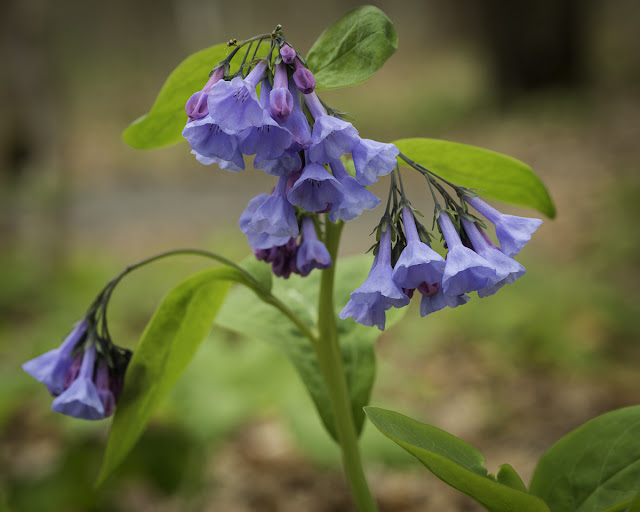
Looking back at the arrival of spring in the Finger Lakes, it seems timely to recount some of my favorite images. It is a mix of birds and some hardy wildflowers.
Among the earliest arrivals are two antagonists for nesting boxes. The first are Tree Swallows. They are nimble fliers that specialize in catching small insects on the wing. Their response time is so fast that we humans seem just hopelessly inadequate. When the sun catches their deep blue feathers, a brilliant color is seen.

The Eastern Bluebird has designs on the same nest boxes. Their colors are certainly the equal of the Tree Swallows, though the female is notably more subtle.
Both of these birds are vocal, but the Eastern Bluebird certainly wins in terms of musicality. I must admit that when the two species get to fighting over a nest box, I root for the bluebirds. It takes a lot of courage for a single pair of bluebirds to stand up to the repeated swoops of a number of swallows.
Another favorite of mine is the Wood Duck. Whereas the swallows and bluebirds are fairly calm around people, the Wood Duck is extremely wary. It's probably because they are so tasty, not that I could eat one. The sweet vocalizations of a Wood Duck just melt my heart. These two bachelors dropped over my head and wandered about the stream for over a half-hour. It was worth getting up at 5:00 a.m. just to see and hear them.

The other exciting moments this April centered on a Redtail Hawk nest perched on a rock face above a creek. A few days after their eggs hatched, I was there when one adult flew in to relieve its mate on the nest.
The first adult wastes no time leaving to hunt. In the interval, the small chicks are revealed. Look closely between the chicks and the adult. They have caught a starling to feed the chicks. Usually, I see rodents in this nest.

Later in April, the native wildflowers begin to show. I always am excited when this begins, since they were my introduction to nature photography. Each year, I see new ways to interpret them. Round-lobed Hepatica were my first discovery this year.
Closely following hepatica was Blue Cohosh. It is an easily overlooked flower; I find it so hard to photograph that I can be found widely search for just the perfect form and freshness of bloom. Once found, the task is usually to catch it not in motion, when the breeze subsides.
Later the two local examples of wild Dicentra appear. Seen at right, Squirrel Corn -Dicentra canadensis- has a heart shaped flower. The roots are said to resemble grains of yellow corn (though I have never excavated one to see). There is a blush of violet and yellow on the blooms that is difficult to capture.

The other Dicentra, Dutchman's Breeches -Dicentra cucullaria- is seen at left. The two exaggerated spurs atop the yellow tipped flower do, indeed, resemble upside-down pantaloons.
Both of these Dicentra are available from sources that grow them for wild harvested seeds. They do well in a garden, and to date, I have seen no evidence that deer eat them (yet). They bring early color to my garden.
This brings me to my big four for April wildflower photography. It's a matter of personal interest, likely in each case driven by the rich colors. The first is Marsh Marigold, Caltha palustris. It has rich colors and a waxy finish that makes them almost glow.
Next is Virginia Bluebells, Mertensia virginica. With these, it is the color.
It is good to save the best for last. In this case, it is white Large-flowered Trillium, Trillium grandiflorum. Both trillium assume a personality to me and each year is new set of portraits.
So, this suggests why I am so busy in April. In spite of changeable and often wet weather, the boredom of March is past and both birds and blooms start to reveal themselves. May will bring more of both plus longer hours of daylight.








No comments:
Post a Comment